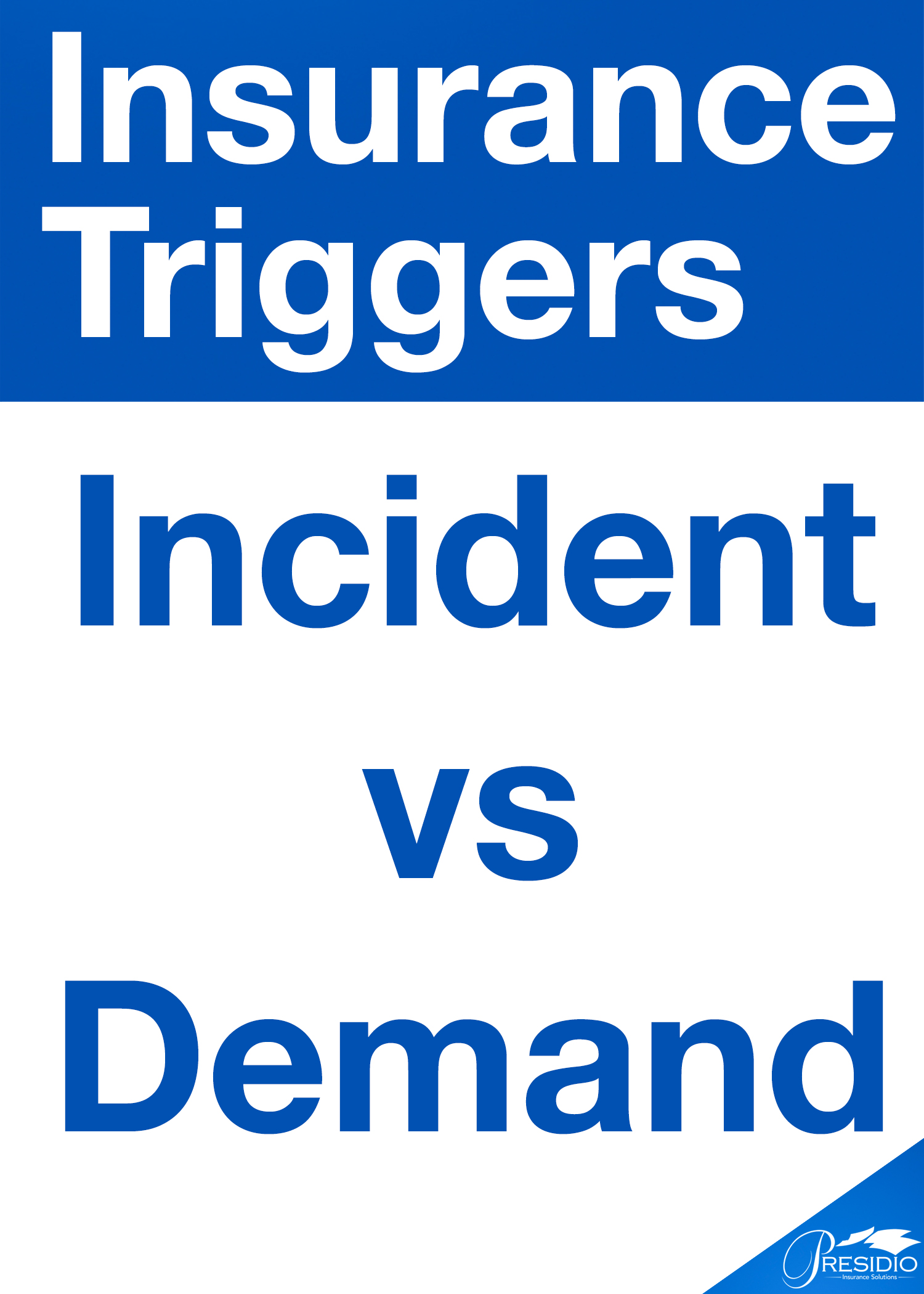A medical malpractice insurance policy is a contract. The terms of the contract, what is covered and what is excluded, can vary from company to company and even among different policies issued by the same company. One important variance can be demonstrated by demand and incident triggers

In a claims-made policy, the limits that apply to a claim are the limits that are in place at the time the claim is made not at the time the services were rendered. An insured can move from one claims-made company to another, with each subsequent company picking up the retroactive dates of previous companies. Any new claims, even those that occurred while insured by a previous company, are reported to the company whose policy is in force at the time the claim is made.
However, claims made companies do not intend to provide coverage for known claims that occurred under a previous carrier. The retroactive coverage is there to cover new claims that were unforeseeable at the time the insured switched medical malpractice insurance carriers.
An insured who has switched from one claims made insurer to another must be able to determine which company is responsible for a claim. Claims-made polices come in two forms, “incident” or “demand” reporting. In the better form, “incident reporting”, a claims-made insurer is responsible for any incident reported to it during the time that its insurance is in force, even if it does not ripen into a claim until after the policy is cancelled. In this policy form, if an insured has a bad outcome and reports it to the insurer, the company is responsible for any claim that is ultimately made on that incident. In the “demand reporting” form, the company does not accept as its responsibility anything but claims made during the policy term. A bad outcome is not its responsibility unless it ripens into a claim during its policy term.
This inferior product can significantly affect an insured’s ability to change from one insurer to another if there has been a bad outcome that may lead to a claim because insurance companies are not likely to provide coverage to an applicant if they must also pick up a potential lawsuit as part of the package. In this setting the insured is almost always forced to purchase an expensive “tail” endorsement before switching insurers or to stay with the current insurer until a claim is made.
Whenever a physician, entity, or allied practitioner has a choice (in some markets there may be no choice) between a demand and incident trigger policy, the incident trigger should be taken, no matter the difference in price. That might sound like a huge generalization but it isn’t: demand trigger policies can force insureds with even a single dormant incident to stay with that company for years, to avoid a gap in coverage.
Anyone who is forced to stay with an insurance company because of an open incident may have to wait 3-5 years for the Statute of Limitations to pass (longer if children are treated) before he or she can consider switching companies. During that time, the insured can be subjected to significant premium increases and even changes of coverage. And even the passing of the Statute of Limitations is not a complete guarantee against future claims because, under certain circumstances, the Statute of Limitations can be breached, and it can cost considerable legal fees to invoke the Statute and beat back any challenges to it.
The only way a change can be made to another company with certainty that a reported incident is covered is by purchasing a tail from that demand trigger company. That can be very expensive. In some cases, particularly for “high risk” policies, long-term tails may not be available. Hence the blanket recommendation that demand trigger policies should be avoided at all cost unless there is no other viable choice.
